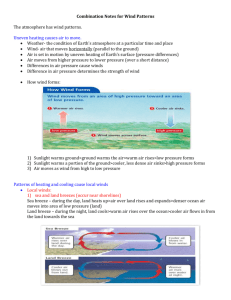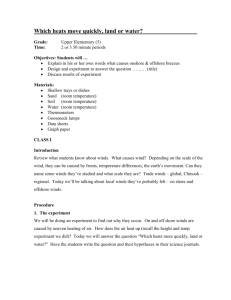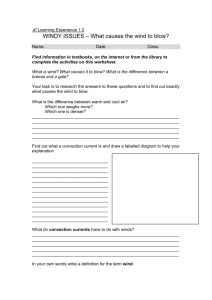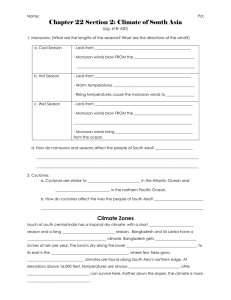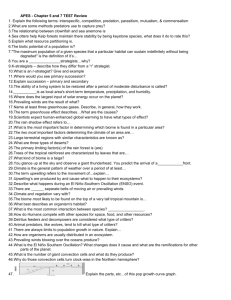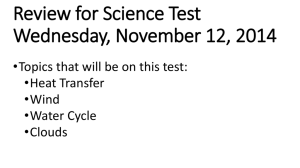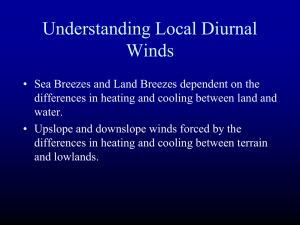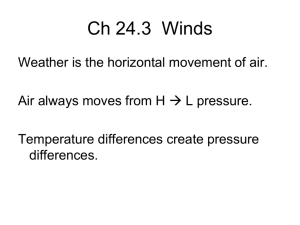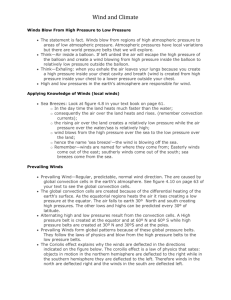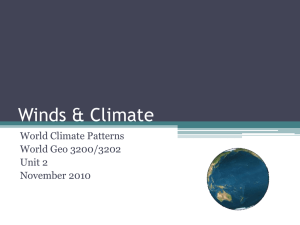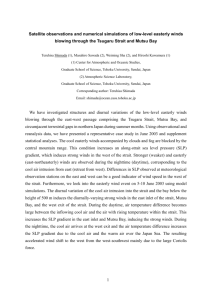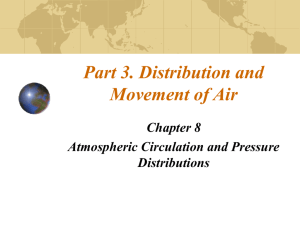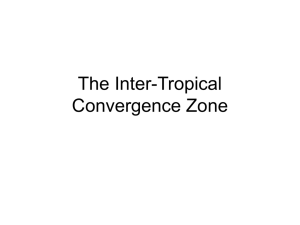Wind Analysis
advertisement
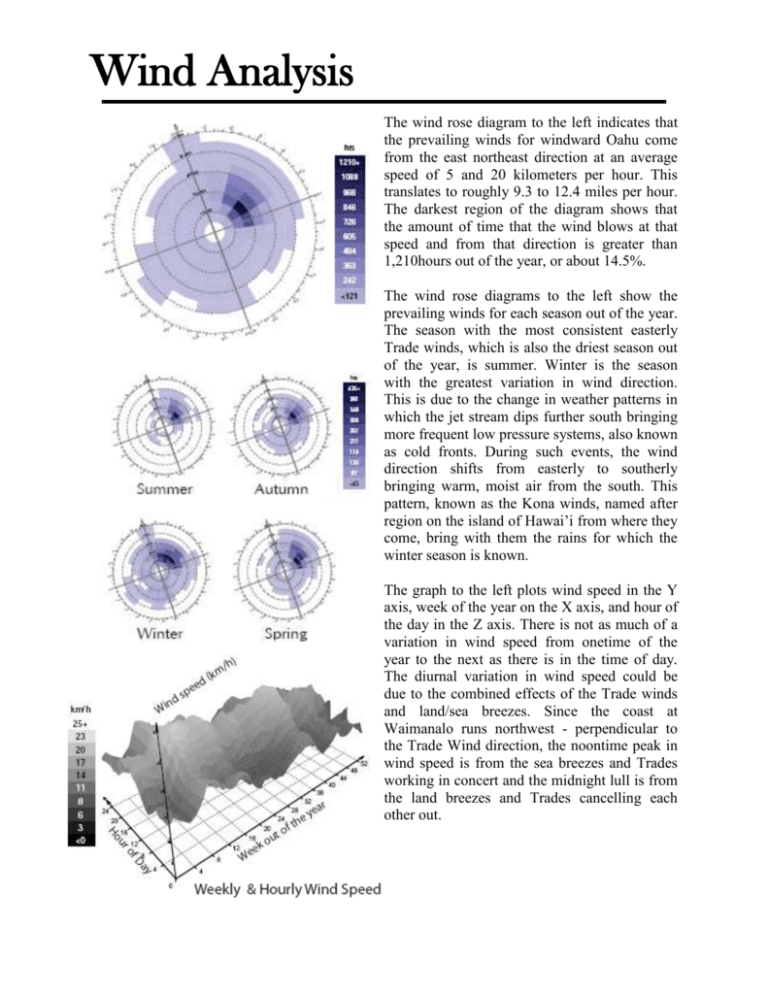
Wind Analysis The wind rose diagram to the left indicates that the prevailing winds for windward Oahu come from the east northeast direction at an average speed of 5 and 20 kilometers per hour. This translates to roughly 9.3 to 12.4 miles per hour. The darkest region of the diagram shows that the amount of time that the wind blows at that speed and from that direction is greater than 1,210hours out of the year, or about 14.5%. The wind rose diagrams to the left show the prevailing winds for each season out of the year. The season with the most consistent easterly Trade winds, which is also the driest season out of the year, is summer. Winter is the season with the greatest variation in wind direction. This is due to the change in weather patterns in which the jet stream dips further south bringing more frequent low pressure systems, also known as cold fronts. During such events, the wind direction shifts from easterly to southerly bringing warm, moist air from the south. This pattern, known as the Kona winds, named after region on the island of Hawai’i from where they come, bring with them the rains for which the winter season is known. The graph to the left plots wind speed in the Y axis, week of the year on the X axis, and hour of the day in the Z axis. There is not as much of a variation in wind speed from onetime of the year to the next as there is in the time of day. The diurnal variation in wind speed could be due to the combined effects of the Trade winds and land/sea breezes. Since the coast at Waimanalo runs northwest - perpendicular to the Trade Wind direction, the noontime peak in wind speed is from the sea breezes and Trades working in concert and the midnight lull is from the land breezes and Trades cancelling each other out.

